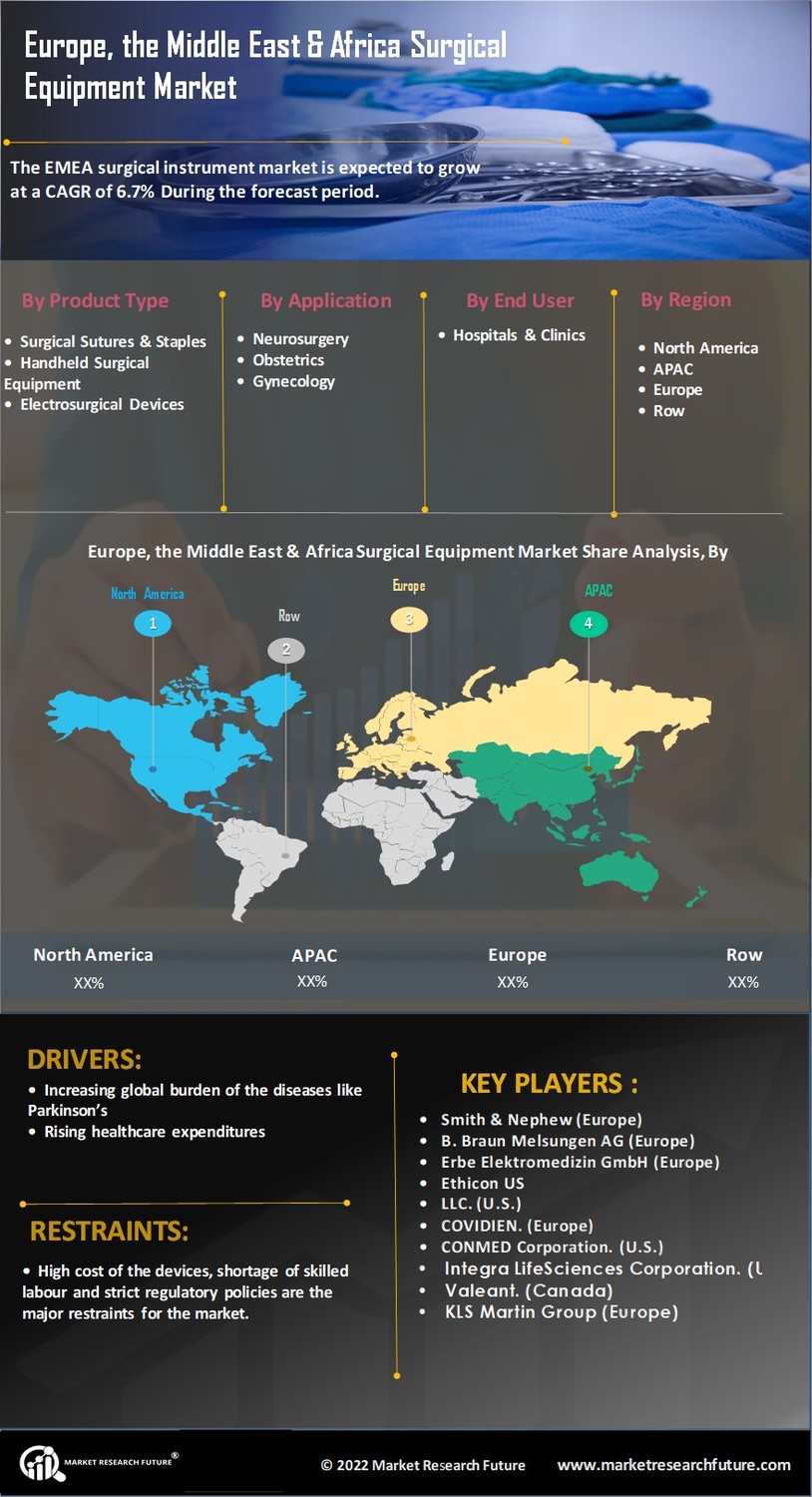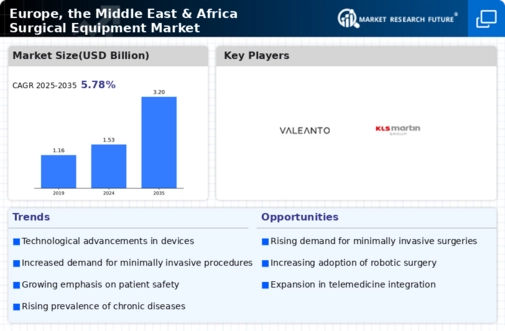Europe Surgical Equipment Market Summary
The Europe, the Middle East and Africa Surgical Equipment market is projected to grow significantly from 1.53 USD Billion in 2024 to 3.2 USD Billion by 2035.
Key Market Trends & Highlights
Europe, the Middle East & Africa Surgical Equipment Key Trends and Highlights
- The market is expected to experience a compound annual growth rate (CAGR) of 6.93% from 2025 to 2035.
- By 2035, the market valuation is anticipated to reach 3.2 USD Billion, indicating robust growth potential.
- In 2024, the market is valued at 1.53 USD Billion, reflecting a strong foundation for future expansion.
- Growing adoption of advanced surgical technologies due to increasing healthcare investments is a major market driver.
Market Size & Forecast
| 2024 Market Size | 1.53 (USD Billion) |
| 2035 Market Size | 3.2 (USD Billion) |
| CAGR (2025-2035) | 6.93% |
Major Players
Smith & Nephew (Europe), B. Braun Melsungen AG (Europe), Erbe Elektromedizin GmbH (Europe), Ethicon US, LLC. (U.S.), COVIDIEN. (Europe), CONMED Corporation. (U.S.), Integra LifeSciences Corporation. (U.S.), Valeant. (Canada), KLS Martin Group (Europe)













Leave a Comment